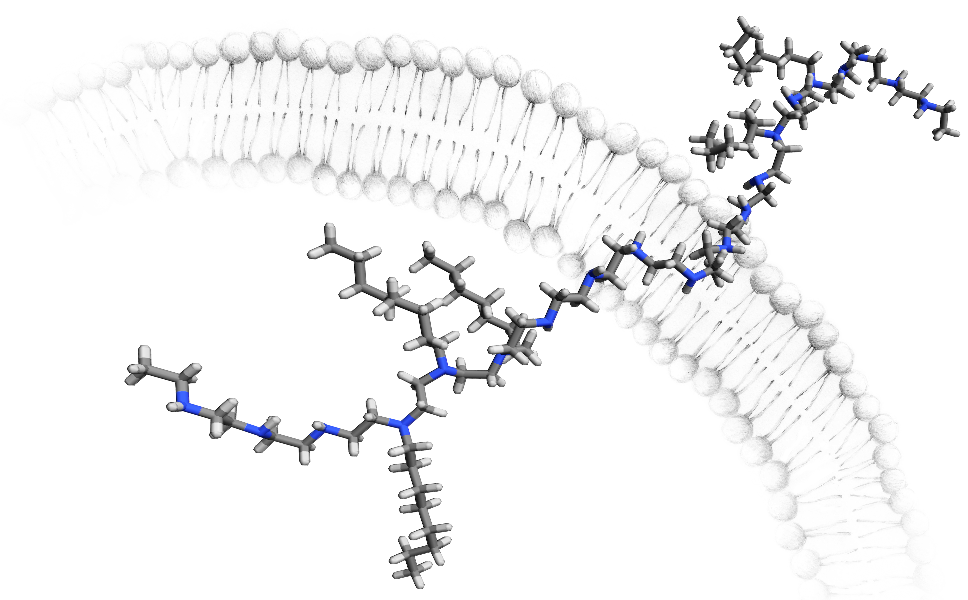PoCoDi
Amphiphilic Polymers for the Controlled Disruption of cell membrane: stimuli responsive action, activity against Mycobacterium.
Amphiphilic Polymers for the Controlled Disruption of cell membrane: stimuli responsive action, activity against Mycobacterium.
Cell wall disruption of the lipid bilayer, mediated by the natural and artificial macromolecules is a phenomenon broadly exploited for e.g. the drug and gene delivery, or for the antimicrobial applications. The aim of this project is to understand mechanism of interactions between certain antimicrobial amphiphilic polymers and cell membrane and in particular to gain insight into the way those polymers are decomposing lipid bilayer.
In our works, cell membrane disrupting properties of amphiphilic polymers derived from co-polymeric derivatives of (i) linear polyethylenimine (LPEI-d) and (ii) co-polymers of maleic anhydride (PMA-d) are investigated with aim to understand structure / activity relationship. Particular focus of this research is placed on understanding of mechanism of action like e.g. behavior of the polymer in the artificial cell membrane structure and molecular optimization to achieve maximum effectiveness against model organisms like e.g. Escherichia coli or Staphylococcus aureus. Attempts to construct amphiphilic polymer with switchable antimicrobial properties and stimuli responsive trigger of action is undertaken with aim to fabricate and test macromolecules which antimicrobial activity can be switched on and off, at will, under several stimuli, relevant to physiological environment like e.g. pH, temperature or redox potential. Finally we test our antimicrobial polymers to achieve substantial disrupting cell membrane activity against Mycobacteria. This part of the project is aiming to provide new knowledge useful in combat against such a diseases as Tuberculosis and Leprosy.

PoCoDi – amphiphilic POlymers for the COntrolled DIsruption of cell membrane: stimuli responsive action, activity against Mycobacterium. We have initiated a…